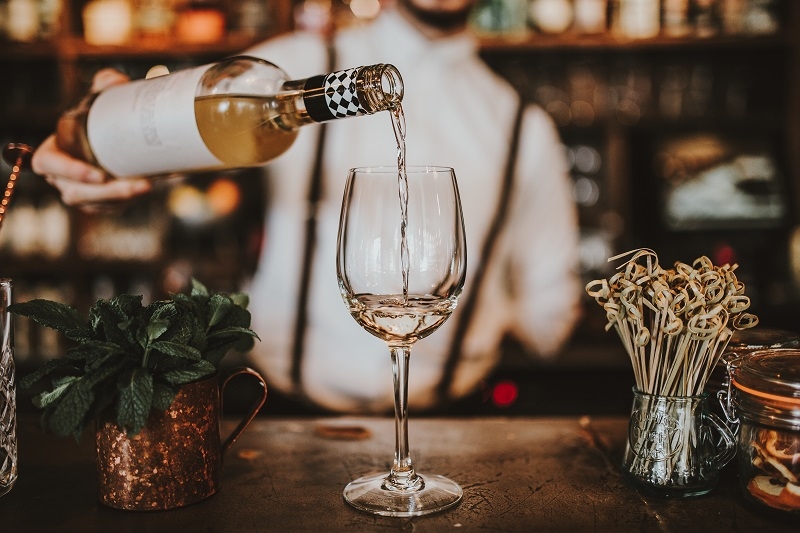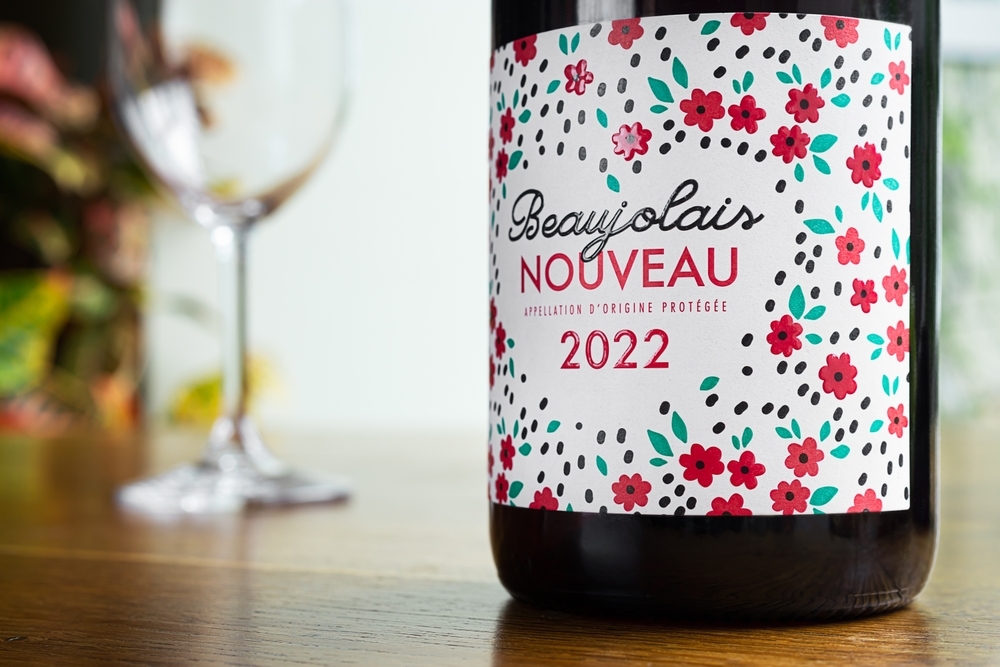Sway Into The Table Wine: Varieties, Appeal And Much More

In the intricate world of oenophiles, few terms evoke as much intrigue and debate as "table wine." Lets learn about the nuances of table wine, its cultural significance, pros and cons, and the top varieties that grace tables around the globe.
Unveiling the Essence of Table Wine
At its core, table wine embodies the essence of friendliness and companionship, seamlessly complementing meals and social gatherings. Unlike fortified or dessert wines, table wines are characterized by their moderate alcohol content and versatility, making them suitable for various occasions. From casual weeknight dinners to festive celebrations, table wines perfectly accompany life's everyday moments.
Understanding Table Wine Across Borders
While "table wine" may conjure a specific image in the United States, its meaning varies across regions and cultures. In the United States, the Alcohol and Tobacco Tax and Trade Bureau (TTB) legally defines table wine as still wines containing no more than 14% alcohol by volume. This category encompasses an extensive array of varietals, from crisp Chardonnays to bold Cabernet Sauvignons, each offering a unique expression of terroir and craftsmanship.
In Europe, the concept of table wine is deeply ingrained in cultural traditions and regional distinctions. Countries like France, Italy, and Spain boast rich winemaking legacies, producing an abundance of table wines that reflect the diverse terroir of their respective regions. From Burgundy's elegant whites to Rioja's robust reds, European table wines exemplify centuries of winemaking expertise and heritage.
Exploring the Pros and Cons of Table Wine

Pros
Versatility
One of table wine's greatest strengths is its versatility. Whether paired with a hearty steak or a delicate seafood dish, table wines can complement various cuisines and flavors.
Affordability
Compared to premium or rare wines, table wines are often more budget-friendly, allowing wine enthusiasts to explore different varietals without breaking the bank. This accessibility democratizes the world of wine, making it more inclusive and approachable for all.
Accessibility
Table wines are widely available in grocery stores, shops, and restaurants, making them easily accessible to consumers. Whether browsing the shelves of a local wine shop or perusing the wine list at a restaurant, finding quality table wine is a straightforward endeavor.
Food Pairing
With their moderate alcohol content and balanced flavors, table wines enhance the dining experience. From classic pairings like Cabernet Sauvignon with steak to unexpected combinations like Riesling with spicy Thai cuisine, the possibilities for food and wine pairing are endless.
Everyday Enjoyment
Table wine's most compelling aspect is its ability to elevate life's everyday moments. Whether shared over a casual meal with loved ones or savored during a relaxed evening at home, table wines epitomize the simple pleasures of everyday indulgence.
Must Read: Noble Rot Wine: A Sweet Symphony of Fungi and Grapes
Cons
Limited Aging Potential
Unlike fine wines designed for extended aging, most table wines are meant to be consumed relatively young and must improve with time. While some may benefit from short-term aging, most are best enjoyed within a few years of release.
Quality Variability
Due to the volume of table wines produced, quality can vary significantly from one bottle to another. This variability underscores the importance of researching reputable producers and trusted sources to ensure a satisfying wine-drinking experience.
Lack of Prestige
While table wines offer excellent value and versatility, they may need more prestige of premium or collectible wines. For some enthusiasts, the allure of rare or exclusive wines may overshadow the appeal of everyday table wines.
Sulfite Sensitivity
Some individuals may experience adverse reactions to sulfites commonly found in table wines, leading to headaches or allergic symptoms. While sulfites serve as a preservative to prevent spoilage, those with sensitivities should exercise caution when selecting wines.
Overconsumption Risks
As with any alcoholic beverage, excessive consumption of table wine can pose health risks and should be enjoyed in moderation. Responsible drinking habits are essential to ensuring a safe and enjoyable wine-drinking experience.
Check This Out: Pour and Count: Decoding Carbs in Red Wine for a Healthier Sip
Top Table Wines: A Journey Through Flavor and Tradition
Chateau Ste. Michelle Riesling (Washington State, USA)
With its vibrant acidity and refreshing citrus notes, this Riesling is a perennial favorite for casual sipping and elegant dining.
Cono Sur Bicicleta Pinot Noir (Chile)
Expressive Pinot Noir delights the palate with its ripe cherry flavors, silky texture, and subtle earthy undertones, making it an ideal choice for pairing with a variety of dishes.
La Vieille Ferme Blanc (Rhone Valley, France)
Crafted from a blend of traditional Rhone varietals, this white wine boasts crisp acidity, vibrant fruit flavors, and a hint of minerality, culminating in a harmonious and refreshing expression of terroir.
Santa Cristina Sangiovese (Tuscany, Italy)
Bursting with ripe cherry, plum, and spice aromas, this Sangiovese offers a glimpse into the sun-drenched vineyards of Tuscany. It delivers a delightful balance of fruitiness and structure.
Casillero del Diablo Cabernet Sauvignon (Chile)
Rich and full-bodied, this Cabernet Sauvignon entices the senses with its luscious blackberry and cassis flavors, complemented by hints of vanilla and oak for a luxurious finish.
Kim Crawford Sauvignon Blanc (Marlborough, New Zealand)
Renowned for its vibrant acidity and tropical fruit aromas, this Sauvignon Blanc showcases the distinctive terroir of Marlborough, delivering a burst of citrus and passionfruit flavors with every sip.
Bogle Old Vine Zinfandel (California, USA)
Crafted from old vine Zinfandel grapes, this wine offers layers of complexity with ripe berry flavors, spice notes, and velvety tannins, creating a sumptuous and satisfying drinking experience.
Torres Sangre de Toro Garnacha (Catalonia, Spain)
Named after the legendary "Bull's Blood" of Catalonia, this Garnacha enchants the palate with its ripe berry aromas, silky texture, and hints of Mediterranean herbs, capturing the essence of Spain's winemaking heritage.
Villa Maria Private Bin Sauvignon Blanc (Marlborough, New Zealand)
Crisp, refreshing, and brimming with citrus and tropical fruit flavors, this Sauvignon Blanc epitomizes the signature style of Marlborough, offering a tantalizing taste of New Zealand's pristine vineyards.
Louis Jadot Beaujolais-Villages (Burgundy, France)
Fresh and fruity, with vibrant cherry and raspberry notes, this Beaujolais-Villages exudes the charm and elegance of Burgundy, making it a versatile and delightful choice for any occasion.
Also Read: Discovering the Elegance of Tokaji Wine: A Hungarian Treasure
Conclusion
Table wine is a timeless symbol of conviviality, offering diverse flavors and styles to suit every palate. Whether shared over a casual meal with loved ones or savored during a moment of quiet reflection, table wines hold a special place in the hearts of wine enthusiasts worldwide. So raise a glass, savor the moment, and toast to the simple pleasures found in every bottle! Cheers!
FAQs
What distinguishes table wine from other types of wine?
Table wine is typically characterized by its moderate alcohol content and suitability for meal pairing.
Are table wines only available in standard bottle sizes?
While most table wines are sold in 750ml bottles, they are available in larger formats such as magnums or boxes.
Can table wines be aged?
While some table wines may benefit from short-term aging, most are best consumed within a few years of release.
Are all table wines dry?
Table wines can range from bone-dry to slightly sweet, offering various flavor profiles to suit different preferences.
Do table wines contain sulfites?
Sulfites are commonly used as preservatives in table wines to prevent spoilage but are typically present in minimal amounts.
This content was created by AI
No keywords available
-1717753922-r.jpg)


